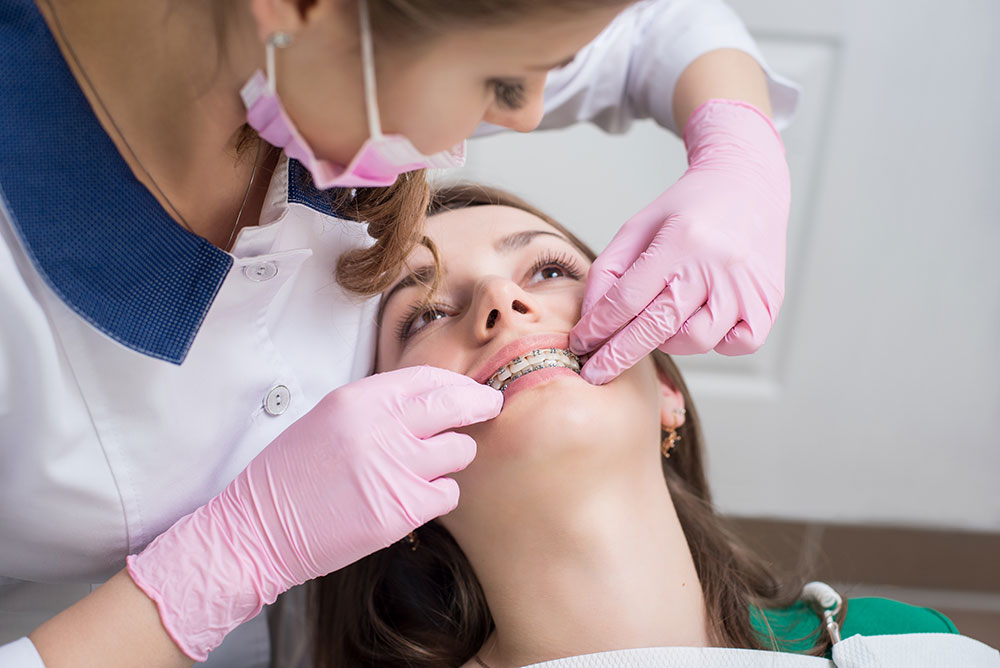Legacy Orthodontics - The Facts
Legacy Orthodontics - The Facts
Blog Article
The 6-Second Trick For Legacy Orthodontics
Table of ContentsThe 6-Second Trick For Legacy OrthodonticsLegacy Orthodontics Things To Know Before You Get This9 Easy Facts About Legacy Orthodontics DescribedThe Buzz on Legacy OrthodonticsThe smart Trick of Legacy Orthodontics That Nobody is Discussing
In enhancement, we offer adjustable treatment routines, versatile payment choices and an enjoyable, delightful experience.An orthodontist is a dentist educated to detect, protect against, and deal with teeth and jaw abnormalities. Orthodontists work with individuals of all ages, from youngsters to adults.
Malocclusion, or misaligned teeth, can cause oral issues, including dental cavity, gum tissue illness, and tough or painful chewing. Not everyone is birthed with straight teeth. If you have a poor bite or big spaces in between your teeth, you might wish to seek advice from a dentist concentrating on orthodontic care.
The 3-Minute Rule for Legacy Orthodontics
( Photo Credit Report: DigitalVision/Getty Images) Orthodontists use taken care of and removable dental gadgets, like dental braces, retainers, and bands, to transform the position of teeth in your mouth. Orthodontic treatment is for oral abnormalities, consisting of: Uneven teethBite troubles, like an overbite or an underbiteCrowded teeth or teeth that are too far apartJaw misalignmentThe objective of orthodontic therapy is to enhance your bite.
A healthy bite guarantees you can eat, eat, and speak appropriately. While you might think of orthodontists as mostly for children or young adults that require braces, they can deal with dental problems at any age. Orthodontists go to university, oral school, and orthodontic college. After graduation, they spend 2 or 3 years in an orthodontic residency program.
All orthodontists are dental professionals, however not all dental practitioners are orthodontists. Orthodontic residency programs offer intensive, focused direction for oral professionals. They focus on two areas: Exactly how to effectively and securely move teeth Exactly how to appropriately guide development in the teeth, jaw, and faceOnce an orthodontist has completed training, they have the choice to end up being board accredited.
7 Easy Facts About Legacy Orthodontics Explained
Imbalance, or malocclusion, is the most typical reason individuals see an orthodontist. It is hereditary and is the outcome of size distinctions between the upper and reduced jaw or in between the jaw and teeth. Malocclusion brings about tooth overcrowding, an irregular jaw, or uneven bite patterns. Malocclusion is normally treated with: Your orthodontist attaches steel, ceramic, or plastic square bonds to your teeth.
Some individuals require a headwear to help move teeth into line with pressure from outside the mouth. A retainer is a personalized tool that maintains your teeth in area.
They can produce additional space in the mouth without having to draw teeth. Orthodontists utilize cables, surgical screws, or plates to support your jaw bone.
You may need to see an orthodontist if you have: Crowding or not sufficient space for all of your teethOverbite, when your upper teeth come your base teethUnderbite, when your base teeth are as well much forwardSpacing or concerns with gapsCrossbite, which is when your upper teeth fit behind your bottom teeth when your mouth is closedOpen bite or an upright gap in between your front base and upper teethMisplaced midline, when the facility of your bottom and upper teeth don't align Correcting an oral malocclusion can: Make biting, eating, and speaking easierImprove the balance of our face and your general appearanceEase pain from temporomandibular joint disordersSeparate your teeth and make them much easier to clean up, helping avoid tooth decay or cavities It's usually a dental expert who first notices misaligned teeth throughout a routine examination.
An Unbiased View of Legacy Orthodontics

Throughout your initial orthodontic consultation, you'll likely have: An oral examPhotos taken of your face and smileDental X-raysPanoramic (360 degree) X-rays of your face and headImpressions to produce mold and mildews of your teethThese tests will aid your orthodontist recognize exactly how to proceed with your therapy. invisalign. An orthodontist is a dental professional that's had training to treat your teeth and jaw
Orthodontists may execute surgical procedure, exams,X-rays,and even more to help you achieve a more comfy, much healthier smile. An orthodontist is focused on your bite, so something like a chipped tooth would be handled by a dental practitioner. Orthodontists are dental practitioners yet not all dental professionals are orthodontists. Orthodontists are concentrated on your bite, or the method your teeth fit with each other, and the straightness of your teeth.
Ever wondered exactly how celebs always appear to have flawlessly aligned teeth? The answer typically depends on the proficient hands of an orthodontist. But exactly what does an orthodontist do? Orthodontists are oral specialists who concentrate on remedying abnormalities in the teeth and jaws. Their know-how surpasses simply creating a stunning smile; it extends to enhancing your general dental health and function.
Not known Factual Statements About Legacy Orthodontics

, orthodontists have a varied toolkit at their disposal. These tried-and-true braces use a system of braces bonded to the teeth and linked by cables.
Clear aligners, like Invisalign, are a prominent option for people seeking an extra very discreet treatment choice. These detachable trays are custom-made to gradually change the teeth's position. Headgear might be utilized along with dental braces or aligners to use additional targeted forces, especially for correcting jaw discrepancies. In situations of narrow jaws, palatal expanders can be made use of to develop room for proper tooth placement.
Report this page